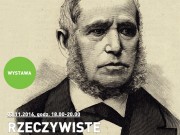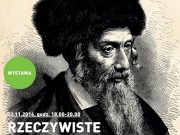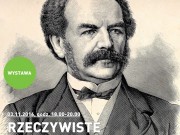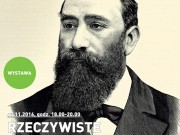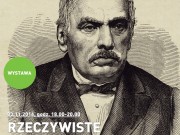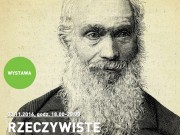opening: 03.11.2016 (Thursday), at 6 pm to 8 pm
exhibition open until 26.02.2017
This exhibition prtesents over 60 prominent Polish Jews whose portraits were printed in the illustrated – mostly Polish – press of the 19th century.
The illustrated press began with the invention of the wood engraving technique in the second half of the 19th century. It was a process of taking an original illustrated artwork that was drawn onto a piece of wood, and was then carved (engraved) into the wood. The wood was then be placed onto a printing press together with the type-font, producing a print of the original illustration from the wood onto newspaper.
Its popularity wained towards the beginning of the 20th century with the invention of the rotary printing press (which is still used today) because it could not accommodate a piece of wood that held the illustrated engraving. Wood engraving technique was widely replaced by daguerreotype (a technique for replicating photography) and original illustrated artworks for newspapers became a thing of the past.
It is not without significance that the period (1860-1890) and place (Russian annexed Poland) where wood engravings were a popularized technique, was a period of both political repression and pursuit of Polish independence. It was also a unique period of harmonization in the common history of Poles and Jews. In illustrated journals from Poland, England, Germany, US and France, we find portraits of Polish Jews. These were mostly „real” portraits made from life or photography or „imaginary” artistic representations.
These common representations of Polish Jews existed not simply because they were Jews, but rather, because of their prominence within the context of Polish society. Most were significant contributors to the culture and history of Poland and Europe at the time, though are virtually unknown today.
In this exhibition you will notice that some of these Jewish figures opted to convert to Christianity, and are buried in Catholic or Protestant cemetaries. This may be understood through the professional, political and social limitations put on Jews at the time – which made conversion often a decision synonymous with societal advancement. At the same time we also present many examples of Jews who were able to achieve such advancement without abandoning their faith and identity. Whatever the circumstances, this was a uniquely fascinating and complicated period in Jewish-Polish history, and this exhibition was prepared in the hopes of illuminating the depths and realities of these complexities, rooting this period in facts instead of stereotypes about Polish-Jewish relations.
Co-organizator:
the Jew Not Painted Foundation








